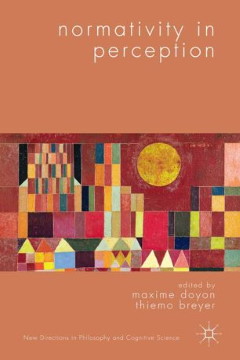Book | Chapter
Introduction
pp. 1-13
Abstract
Human activity is permeated by norms of all sorts: moral norms provide the "code' for what we ought to do and how we ought to behave, norms of logic regulate how we reason (or ought to), scientific norms set the standards for what counts as knowledge, legal norms determine what is lawfully permitted and what isn't, aesthetic norms establish the canon of beauty and thus shape artistic trends and practices, and socio-cultural norms provide the criteria for what counts as tolerable, just, praiseworthy, or unacceptable in a cultural milieu. These and similar phenomena are to a high degree responsible for the structure and configuration of our shared world, which is a multi-faceted normative space that allows or encourages certain behaviors and practices and disallows and discourages others. For this reason, we recognize (more or less consciously) in these norms a certain motivational strength, sometimes even a constraining or prohibitive force, thereby provoking reflections, doubts, and hesitations, feelings of regret or culpability, but also social disapprobation or exclusion in the forms of rejection, denunciation, marginalization, stigmatization, or even punishment.
Publication details
Published in:
Doyon Maxime, Breyer Thiemo (2015) Normativity in perception. Dordrecht, Springer.
Pages: 1-13
Full citation:
Doyon Maxime, Breyer Thiemo (2015) „Introduction“, In: M. Doyon & T. Breyer (eds.), Normativity in perception, Dordrecht, Springer, 1–13.


